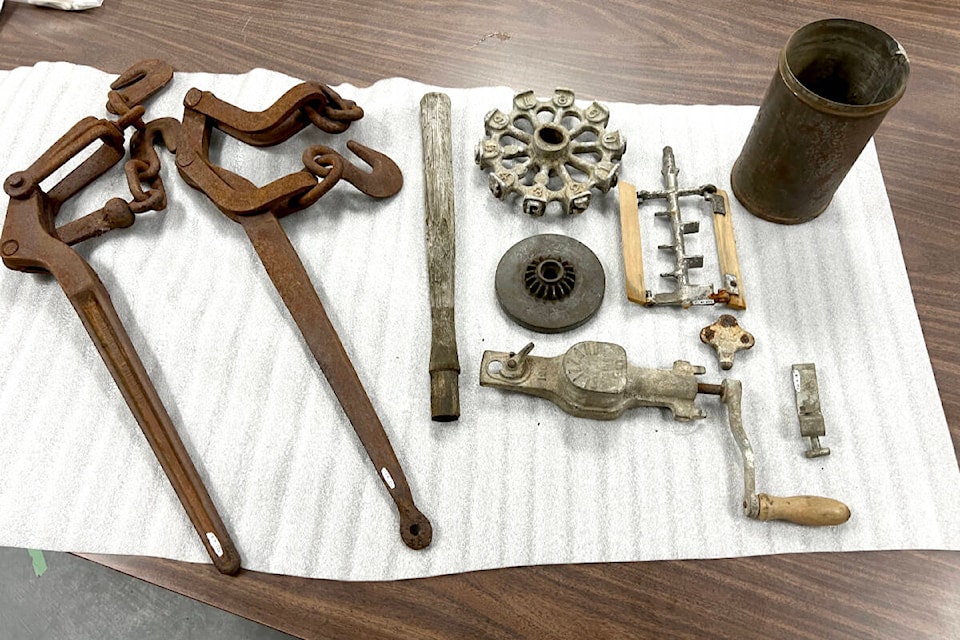Emma Wilton | Contributed
Every year since it opened in 1977, the Sooke Region Museum has received thousands of items from the community. It may be a bit of a mystery what goes on behind the doors regarding the items.
On Sept. 17, when the museum hosted its open house, the collections team conducted tours of its processing and storage spaces. If you were not lucky enough to see inside the spaces, I will explain what happens to an item when it is donated.
Donations of items are core to the ability of museums to interpret and present history. All donations aid the museum in being able to tell the history of the Sooke Region to the locals and tourists who come through our doors.
ALSO READ: The making of a museum exhibit
For the museum to receive and process a donation, there are many steps to ensure thorough documentation. Whenever an item is brought in, we require every donor to read and sign a receipt acknowledging the transfer of the legal title to the museum. If we miss this step, the museum cannot do anything with the item.
Once the initial paperwork is completed, the collections team will process the donations. This includes two main steps: accessioning and cataloguing.
Accessioning happens when we record the new donation and add it to our system. Part of the thorough documentation is recording this information in multiple areas. One area is the paper receipt and a master list for the current year for all donations that have come in. This notes the date, donor, who accepted it and whether it is an artifact or an archival donation. We also give the item an accession number. This number could look like 2022.017. The “2022” is the year it is donated, and the “017” tells us it’s the 17th donation of the year. This number will stick to the item in the museum for the rest of its life.
After accessioning, we will catalogue the item. This includes taking photos, writing descriptions, labelling, and putting them into storage. Altogether, this takes about four to five hours per item. We will physically put the object identification (OID) onto the item when we label items. OIDs look like 2022.017.001. The first two parts of the number are the accession number, while the last part, “001,” is what item is in the donation.
The last step is to transfer all the information to a digital record in our collections management software. This is where we store the donor’s information, photos, and descriptions for all donations in the museum. We also note where the item is in the museum and its condition. It is always important to update these records to know where the item(s) are, their history, and any additional information we need.
•••
Emma Wilton is the collections and exhibits manager at Sooke Region Museum. Email musasst@sookeregionmuseum.com.
editor@sookenewsmirror.com
Like us on Facebook and follow us on Twitter
